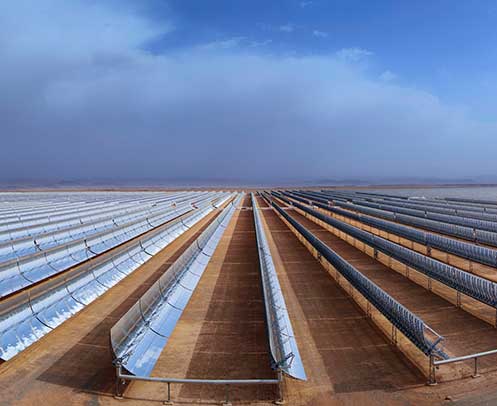
The Xlinks Morocco-UK Power Project could help balance the UK grid and improve resiliency when it launches in the early 2030s, according to Xlinks chief executive James Humfrey.
In an exclusive interview with Energy Voice, Humfrey said grid resiliency would benefit from “scale and diversity of inputs and outputs” adding that, in particular, “it helps reduce the grid investment that’s required – and so that’s more cost efficient”.
“If you’ve got everyone trying to come in through the same part of the grid, you’ll greatly increase the cost of upgrades and congestion and so, you know, that’s really the advantage of coming in in the Southwest UK – for the grid connection,” added Humfrey.
Xlinks is due to make landfall and connect to the UK grid close to the existing Alverdiscott Substation in North Devon. If successful, the project – to be one of the longest HVDC cables in the world, second only to the SunCable project – would flow 3.6 GW of abundant, Moroccan-generated renewable energy to the UK.
The UK government has recognised the potential importance of the Xlinks plan by declaring it a nationally significant infrastructure project (NSIP).
The new electricity generation and battery storage facilities, located in south Morocco, will be connected exclusively to the UK via 4,000km of HVDC sub-sea cables and aim to foster the establishment of an integrated renewable energy industrial ecosystem.
But Xlinks, which “exists to capture the power of nature to generate a near constant, affordable energy supply and connect it to the point of consumption in real time”, is more than just an already-sizeable project. It is the first step toward realising Xlinks’ shared concept of the ‘Global Grid’ – a series of interconnected, mutually supportive supply balancing systems laced across the globe.
Balancing act
Beyond the subject of the physical challenges around interconnections, as well as the practical challenges of balancing the UK grid, Humfrey was able to provide more clarity on where the project is at in terms of offtake agreements.
“We’re in discussions with the UK government for a contract for difference (CfD), which is obviously a familiar mechanism for many industries in other contexts. We’re making good progress with the government through that, and that’s a multi-stage process,” he said.
“That’s important because a UK government CfD does very much support the project finance… And then in terms of the grid, we have our National Grid connections, which are all signed.”
He added: “I think one of the advantages of subsea transmission cables is you’ve actually got some flexibility where you come on shore. And one of the advantages in discussion with National Grid of coming in at Alverdiscott is that you don’t need grid upgrades there.
“The Southwest is a part of the country with high power demand, and therefore bringing supply into that corner of Great Britain is actually very advantageous from a grid perspective – it could save £5 billion in dispatchability costs.
“That’s another advantage of the Global Grid – it also helps to mitigate some of the grid congestion issues that many countries are working through.”
Last year, Xlinks received investment from TAQA and Octopus Energy, while its strategic partner XLCC is pressing ahead with plans for a cable manufacturing facility at Hunterston in Scotland.
Click here to read the full interview with Xlinks CEO James Humfrey.
Recommended for you

